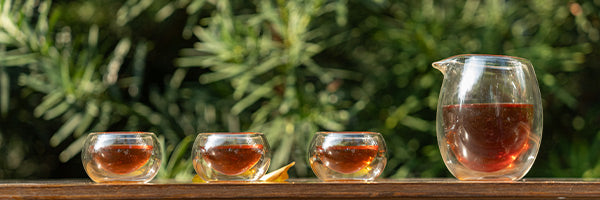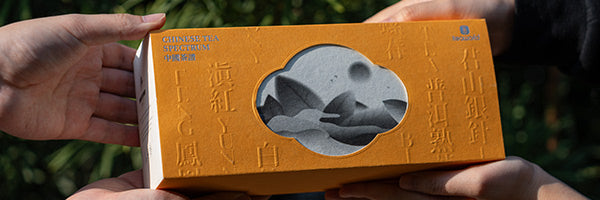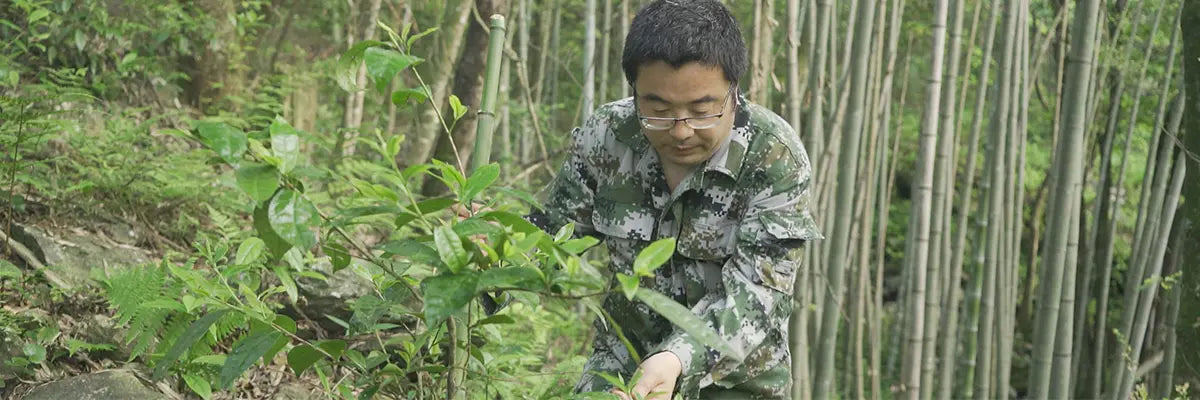Что определяет, является ли чай черным, зеленым или улунским?
Именно метод обработки определяет, является ли чай черным, зеленым или улунским.
Теоретически из свежих листьев чайного растения можно приготовить любой из шести основных видов китайского чая (зеленый чай, белый чай, желтый чай, улун, черный чай и темный чай).
Например, если вы обжарите свежесорванные чайные листья на сковороде, пока они не завянут и не размягчатся, а затем вручную скатаете листья в определенную форму и, наконец, высушите их, вы получите
листовой зеленый чай .

Если в ходе описанного выше процесса после скручивания чайных листьев вы не высушите их напрямую, а вместо этого сложите их в теплое влажное помещение для ферментации в течение определенного периода времени (несколько часов или даже дольше), а затем высушите ферментированные чайные листья, вы получите темный листовой чай.
Итак, что же такое дикий чай?
Когда мы обсуждаем дикий чай, мы больше не концентрируемся на методе обработки
листового чая, а скорее на сырье — свежих листьях.
С точки зрения методов выращивания чайные деревья можно разделить на несколько типов: чайные деревья в чайных садах, дикие чайные деревья и древние чайные деревья (обычно более ста лет) и т. д. Некоторые чаи считаются одними из
лучших листовых чаев именно потому, что их сырье отличается превосходным качеством, например, старинный чай пуэр из Юньнани.
Дикий чай относится к чаю, приготовленному из свежих листьев диких чайных деревьев. Дикие чайные деревья — это те, которые растут в дикой природе без человеческого контроля. Эти деревья, как правило, являются сортами, размножающимися половым путем, которые растут в отдаленных и экологически чистых районах.

Поскольку они не выращиваются людьми, дикий чай с гораздо меньшей вероятностью содержит пестициды и удобрения по сравнению с другими видами чая. Если вы ищете органический листовой чай среди китайских чаев, вы можете рассмотреть дикий чай. Перед покупкой обязательно проверьте наличие тестирования и сертификации от профессиональных организаций, чтобы убедиться, что вы покупаете качественный
органический листовой чай .
Тогда какой же именно вид чая является диким чаем: черный, зеленый или какой-то другой?
В зависимости от ваших потребностей вы можете переработать свежие листья дикого чая в любой из шести основных видов чая. Если вы предпочитаете чай улун, вы можете выбрать переработку свежих листьев дикого чая в дикий
листовой чай улун . Вот почему любители чая сталкиваются с такими сортами, как дикий черный чай, дикий зеленый чай и дикий улун при выборе
китайского чая .
У нас была возможность исследовать и узнать о различных видах дикого чая. Из того, что мы узнали, различные виды дикого чая имеют свои уникальные характеристики. Вот несколько примеров:
-
Дикий черный чай: Аромат сухого дикого черного чая очевиден еще до заваривания. После заваривания чайный настой ярко-оранжево-красный с выраженным ароматом, который не является поверхностным. Вкус насыщенный, сладкий и освежающий, с заметным эффектом слюнотечения.
-
Дикий зеленый чай: Даже после многократного заваривания дикий зеленый чай сохраняет свой свежий и приятный аромат, что является одним из преимуществ китайского зеленого чая . Вкус дикого зеленого чая насыщенный и сладкий. Сначала он может быть немного горьковатым, но быстро становится сладким.

Некоторые любители чая задаются вопросом, можно ли изготовить дикий чай, используя определенный метод обработки, например, метод обработки
Да Хун Пао . Ответ — да, но на практике такие примеры редки.
Мир китайского чая очень разнообразен, с множеством возможностей. Если вы хотите попробовать разные виды китайского чая, рекомендуется начать с
пробника листового чая , который более экономичен и удобен.
Какую пользу для здоровья приносит дикий чай?
Польза китайского чая для здоровья напрямую связана с методами обработки, а не с типом свежих листьев. Например, как дикий черный чай, так и черный чай из чайных плантаций оказывают хорошее воздействие на пищеварение.
Вот полезные свойства различных видов дикого чая. Различные виды дикого чая могут быть подходящими
подарочными наборами для семьи и друзей.
· Дикий зеленый чай:
Дикий зеленый чай содержит большое количество полифенолов чая, особенно катехинов (EGCG) , которые обладают сильными антиоксидантными свойствами. Они помогают предотвратить повреждение клеток и замедлить процесс старения. Кроме того, они помогают снизить риск сердечно-сосудистых заболеваний и способствуют снижению веса.
· Дикий белый чай:
Дикий белый чай богат полифенолами и аминокислотами, которые обладают значительным антиоксидантным действием и способствуют укреплению иммунитета.
· Дикий желтый чай:
Дикий желтый чай имеет высокое содержание чайных полифенолов, а в процессе производства образуется большое количество пищеварительных ферментов. Поэтому желтый чай обладает хорошими антиоксидантными свойствами, повышает иммунитет и улучшает пищеварение.
· Дикий чай улун:
Как полуокисленный чай, дикий улун содержит уникальные чайные полифенолы и теафлавины, которые обладают превосходными антиоксидантными свойствами. Они помогают бороться со свободными радикалами, замедляют старение клеток и положительно влияют на здоровье сердечно-сосудистой системы. Дикий улун также помогает улучшить пищеварение, улучшить внешний вид и контролировать вес. Некоторые из
лучших улунских чаев славятся своим ароматом и оказывают успокаивающее действие на настроение.
· Дикий черный чай:
Дикий черный чай богат полифенолами чая и теафлавинами, которые обладают антиоксидантными свойствами, помогающими замедлить старение и поддерживать здоровье сердечно-сосудистой системы. Дикий черный чай также помогает улучшить пищеварение и слабость селезенки и желудка.
· Дикий тёмный чай:
Дикий темный чай обладает антиоксидантным и регулирующим метаболизм эффектом. Благодаря процессу постферментации дикий темный чай особенно подходит тем, кто хочет улучшить здоровье кишечника и контролировать вес.
















































































